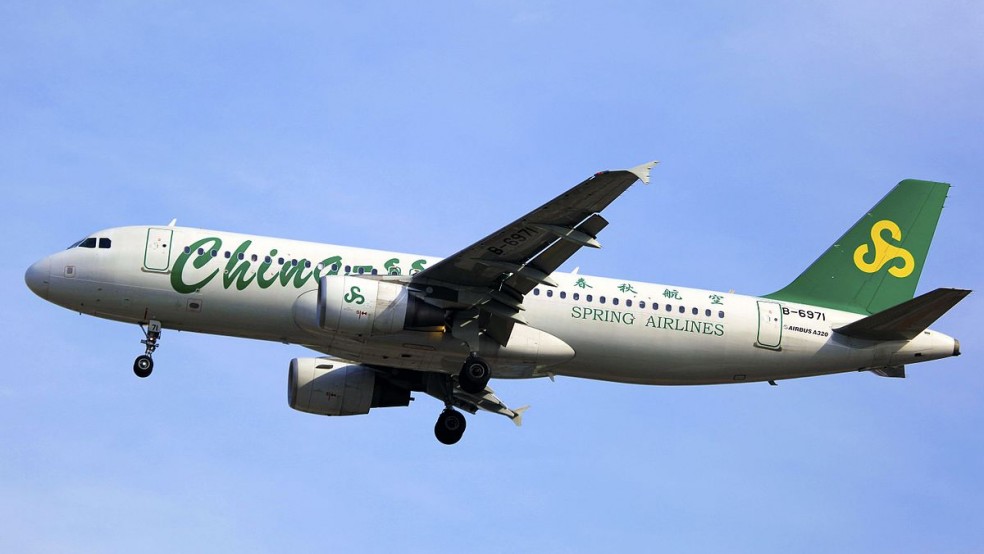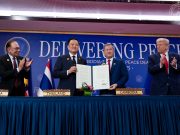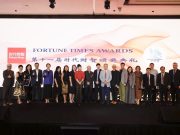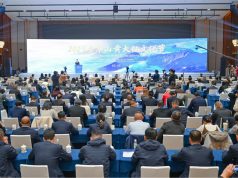(SINGAPORE 2025.09.15) Low-price business models are well-suited to China’s current widespread trend of consumption downgrading. Public data indicates that around 680 million Chinese consumers, almost half the country’s population, are highly price-sensitive, creating a vast and fertile market for low-price strategies to succeed, the Chinese media pointed out.
Three outstanding examples that have successfully tapped this strategy are China’s first low-cost carrier Spring Airlines, popular Chinese beverage and dessert chain Mixue Bingcheng, and major Chinese e-commerce platform Pingduoduo, reported BT Caijing, a prominent Chinese financial information platform.
A striking trend in China is that these low-priced companies have recently become some of the most profitable. Among airlines, Spring Airlines is distinguished for its low fares yet leads the industry in profitability, BT Caijing noted.
The three major airlines have recently released their mid-year reports for 2025. In the first half of the year, Air China lost 1.806 billion (S$325 million), China Eastern lost 1.431 billion yuan, and China Southern lost 1.533 billion yuan. Air China and China Southern have now posted losses for three consecutive quarters, while China Eastern has been unprofitable for 22 quarters straight, continuing the losses they incurred in 2024.
Surprisingly, it is Spring Airlines that has now become the most profitable airline in China. In the first half of 2025, Spring Airlines reported revenue of 10.304 billion yuan, up 4.35% year-on-year, and a net profit of 1.169 billion yuan, down 14.11% year-on-year. Although revenue grew without a corresponding rise in profit, Spring Airlines’ profitability still amazed many consumers, especially as most other airlines were operating at a loss.

Meanwhile, In the tea beverage sector, the cheapest brand, Mixue Bingcheng, is also the most profitable, with a net profit of 4.454 billion yuan in 2024. In e-commerce, Pinduoduo, which focuses on low prices, is the fastest-growing and is projected to have earned 112.4 billion in net profit in 2024. In contrast, JD.com, known for higher-quality but pricier products, made only 41.36 billion yuan in net profit during the same period—about one-third of Pinduoduo’s—and has a market value just a quarter of Pinduoduo’s.
These three companies each maintain rigorous cost-control systems, using vertically integrated supply chains to sharply cut their operating expenses.
Spring Airlines’ strategy of using only one aircraft model for its entire fleet helps cut maintenance cost by 30%. Mixue Bingcheng grows its own lemons and tea, reducing raw material expenses by 40%. Pinduoduo gets its agricultural products directly from the growers, eliminating 3 to 4 intermediaries.
The operational efficiency of these three companies is revolutionary for their industries: Spring Airlines maintains a staff-to-aircraft ratio of 35:1, realizing 40% higher efficiency than the industry average; Mixue Bingcheng sells an average of 800 cups per store per day, achieving three times the typical per-square-meter productivity; and Pinduoduo delivers agricultural products from the source within 48 hours, cutting spoilage rates from 30% to 8%.
A precise market positioning strategy is crucial for the survival of low-cost businesses, enabling them to dominate lower-tier markets, BT Caijing emphasized.
Spring Airlines’ red-eye flights now make up 35% of its schedules, catering to off-peak demand. Mixue Bingcheng commands over 60% market share in smaller cities, while Pinduoduo’s agricultural products’ gross merchandize value has surpassed 500 billion yuan, attracting 300 million new customers.
The lower-tier market contains price-sensitive consumers. Spring Airlines maintains a 91.5% load factor while charging only half the ticket price of its competitors. Mixue Bingcheng creates a strong price advantage with products priced between 4 and 8 yuan. Pinduoduo’s multi-billion-yuan subsidies achieve conversion rates three times the industry average. A conversion rate measures how effectively a business turns potential customers into actual customers.
These low-cost companies tend to follow a similar approach in their innovative profiting models: they offer basic services for free and generate revenue through paid, value-added features, BT Caijin observed.
Spring Airlines turns up profits by expanding passenger capacity and earning more from ancillary services such as onboard meals and checked baggage, which generated 1.03 billion yuan last year. Mixue Bingcheng attracts customers with 2-yuan ice cream to boost tea drink sales, while Pinduoduo offers very cheap products, priced as low as 8 yuan and including free shipping, to attract shoppers to its platform where they are likely to browse and buy more expensive products.
Their management of cost is almost draconian. Spring Airlines keeps its operating cost at just 0.3 yuan per kilometre, Mixue Bingcheng limits the cost of each drink to 3.2 yuan, and Pinduoduo’s digital upgrades in agriculture have cut operating costs by 40%.
There are also other savvy strategies to drive profits and attract customers: Spring Airlines flight attendants earn 30% of their pay through sales commissions; on average; Mixue Bingcheng franchise owners keep 55% of the revenue as gross profit; and Pinduoduo uses social-sharing features like “cut a deal” where users invite friends to be eligible for lower price,, thus encouraging bringing in new users for free instead of relying heavily on paid advertising like Alibaba.
The essence of the low-cost model is to gain a price advantage by offering fewer services, but this approach is increasingly challenged by both consumption downgrading and heightened competition, remarked BT Caijin.
For example, the three major Chinese airlines – Air China, China Eastern Airlines, China Southern Airlines – are now involved in cutthroat fare competition. Some low-cost airlines offer complimentary meals and free check-in of baggage. Combined these with intense competition from China’s widespread high-speed rail network, these could present a significant challenge for Spring Airlines.
Similarly, tea beverage competitors now engulf the lower-tier market. Mixue Bingcheng’s low-price strategy is also facing a test, while Pinduoduo is encountering challenges related to product quality.
The three companies attract large numbers of users with extremely low prices and achieve profitability through scale and strict cost control. This “low price, high volume” approach fits current consumer trends perfectly—amid China’s economic uncertainty, people are increasingly rational and focused on value.
All three have capitalized on the mass market’s strong demand for affordability, leveraging scale to turn low prices into a competitive advantage and showing that low pricing is not only sustainable but also a hallmark of mainstream consumer behaviour, BT Caijin concluded.





































